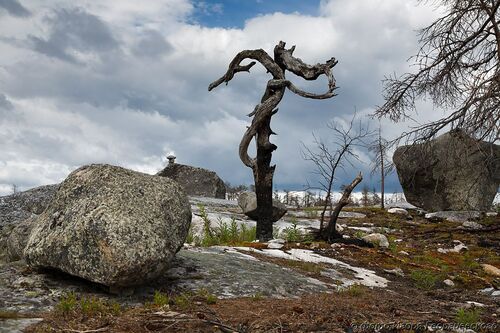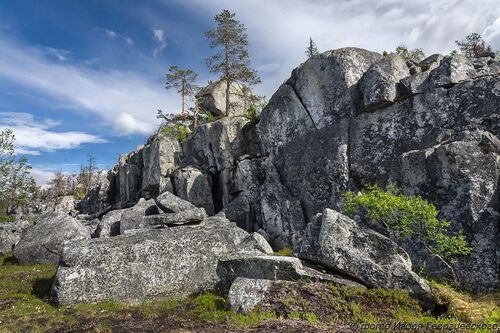Scientific substantiation of the PA was produced under the contract between the Ministry of Natural Resources and Environment of Karelia and the Karelian Research Centre RAS in в 2020. The KarRC RAS units involved in the work were the Department for Interdisciplinary Research, Institute of Biology, Forest Research Institute, and Institute of Linguistics, Literature and History.
– Initially, the proposed area of the national park to be established was at least 40,000 hectares. However, having assessed the territory, scientists came to the conclusion that there are no ecological, biological and recreational reasons for creating such a large PA of such a high conservation status. It was recognized as an optimal option to create the PA on a cluster basis, – explained KarRC RAS Director General Olga Bakhmet.
Eventually, in 2023, decision-makers resolved to establish the national park consisting of three clusters occupying some 14 000 ha in total.
Mount Vottovaara is a valuable recreational destination. Its top offers a commanding view of the surroundings. Tectonic faults often hold lakes with rocky precipices. In combination with pristine forests on the top and slopes of the mountain, these natural systems are attractive to visitors.
Contrary to reports on the web, scientists found no traces of ancient human activity on Vottovaara. The stone objects there fall into two main categories: natural formations and modern man-made structures, sometimes imitating seidi stones. However, the "legged" stones on the mountain were formed in the process of melting of the last mainland glacier. That is why Vottovaara and its landscape with all objects therein can be regarded as original natural, but not archaeological heritage.

On Mount Vottovaara
The factors scientists name among the adverse impacts are trampling of the ground vegetation and damage to tree seedlings, which prevents post-fire regeneration of the forest cover. In general, uncontrolled tourism raises the risk of fire spreading. Allocated campsites are necessary, especially at the foot of the mountain near the protected area's boundary.
“The mountain is attractive for tourists as well as scientists, e.g. specialists in the study of local post-glacial paleoseismic dislocations. It can also be regarded as a geological heritage site, bearing clear evidence of the glacial relief formation. The pools on the mountain top can be a good object for monitoring chemical deposition with atmospheric precipitation in western Karelia”, – reads the scientific findings report.
– In general, all the three clusters of the new protected area are promising both for the development of organized tourism and for various research activities. We are delighted that the territories of multifaceted value in Karelia will be protected. Thereby, we will together conserve the unique natural systems on the one hand and will popularize even more widely the wealth of our region on a national and international scale on the other hand, – Olga Bakhmet summed up.
Photos by I. Georgievsky, G. Kropinov, from KarRC RAS archives




